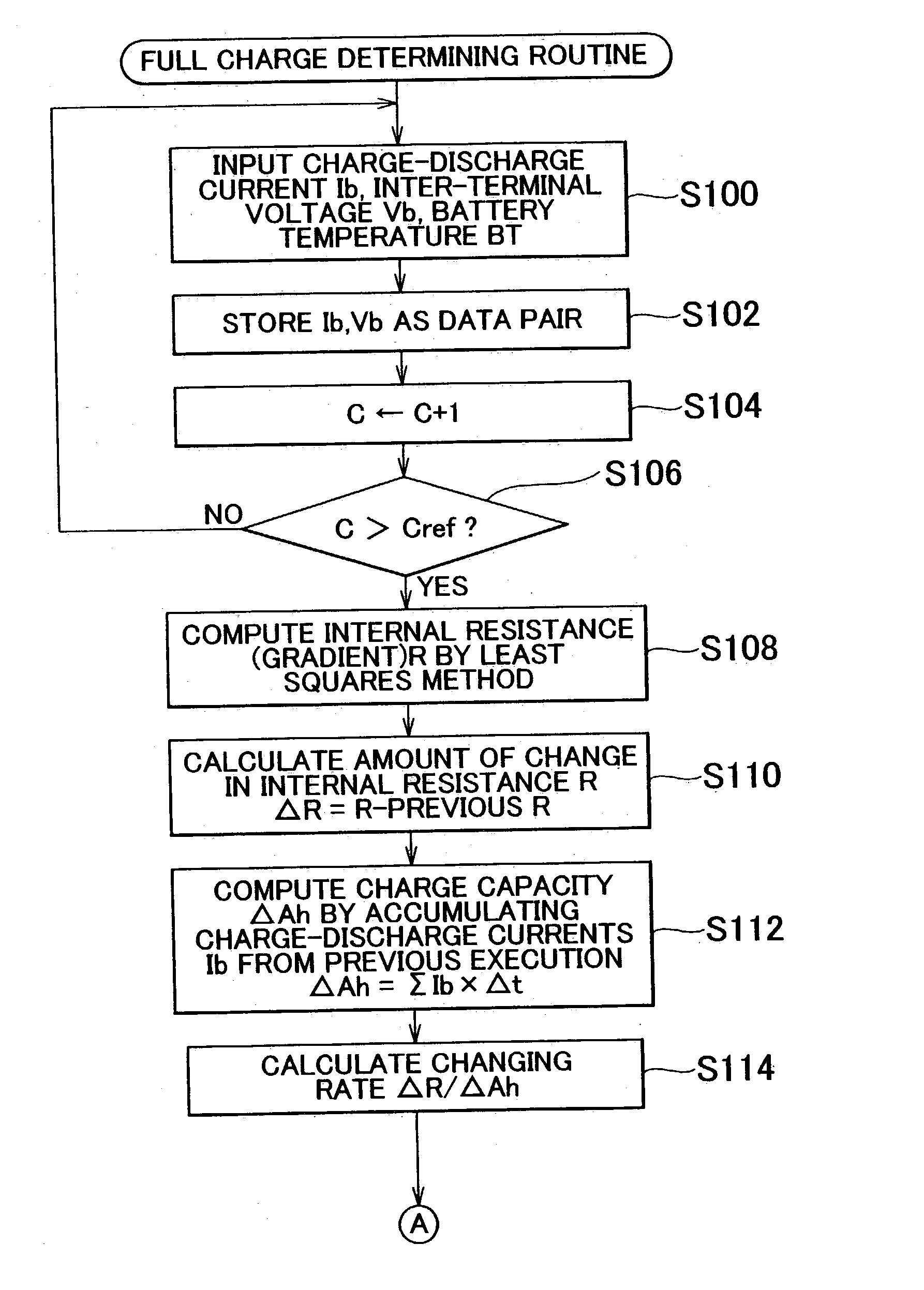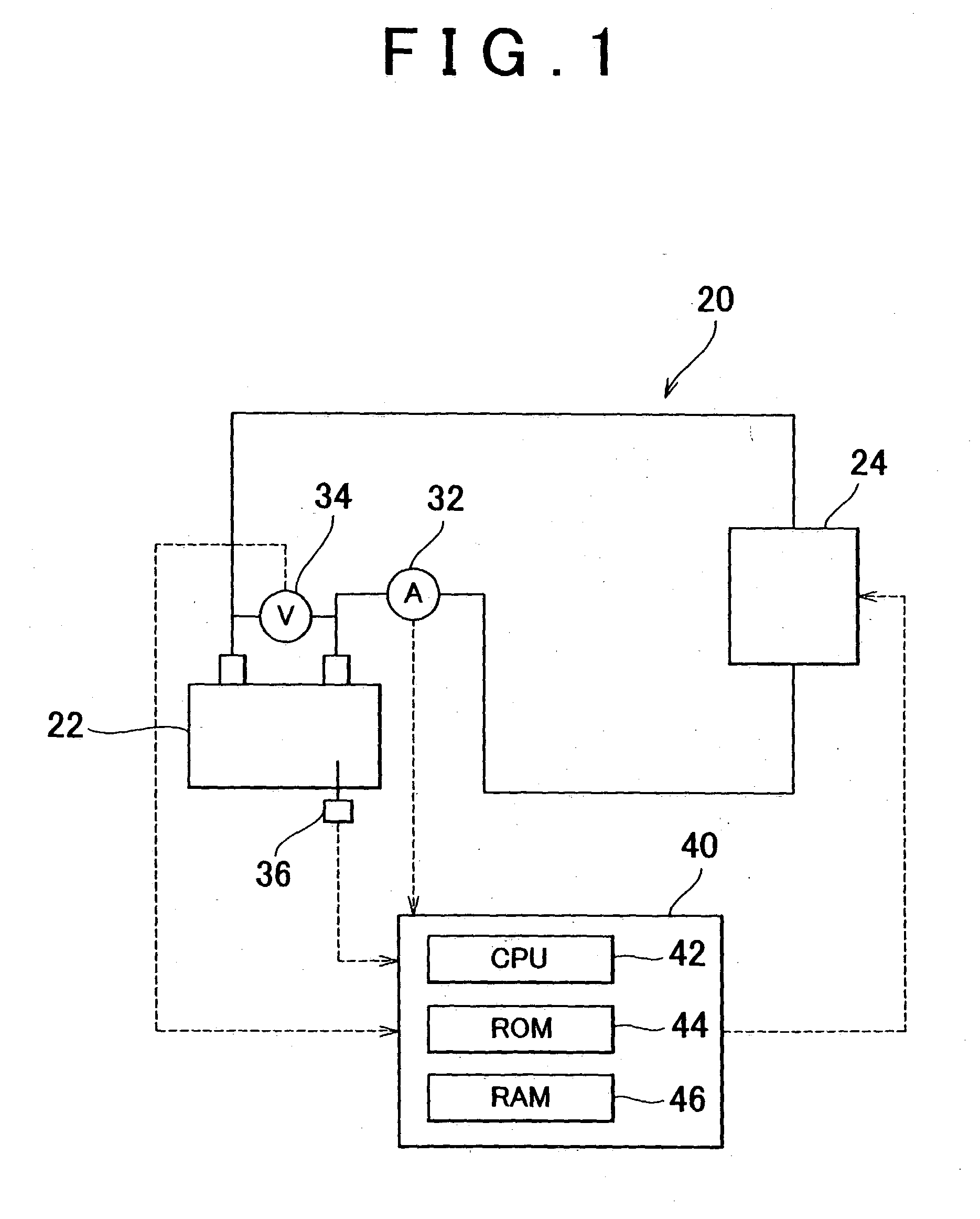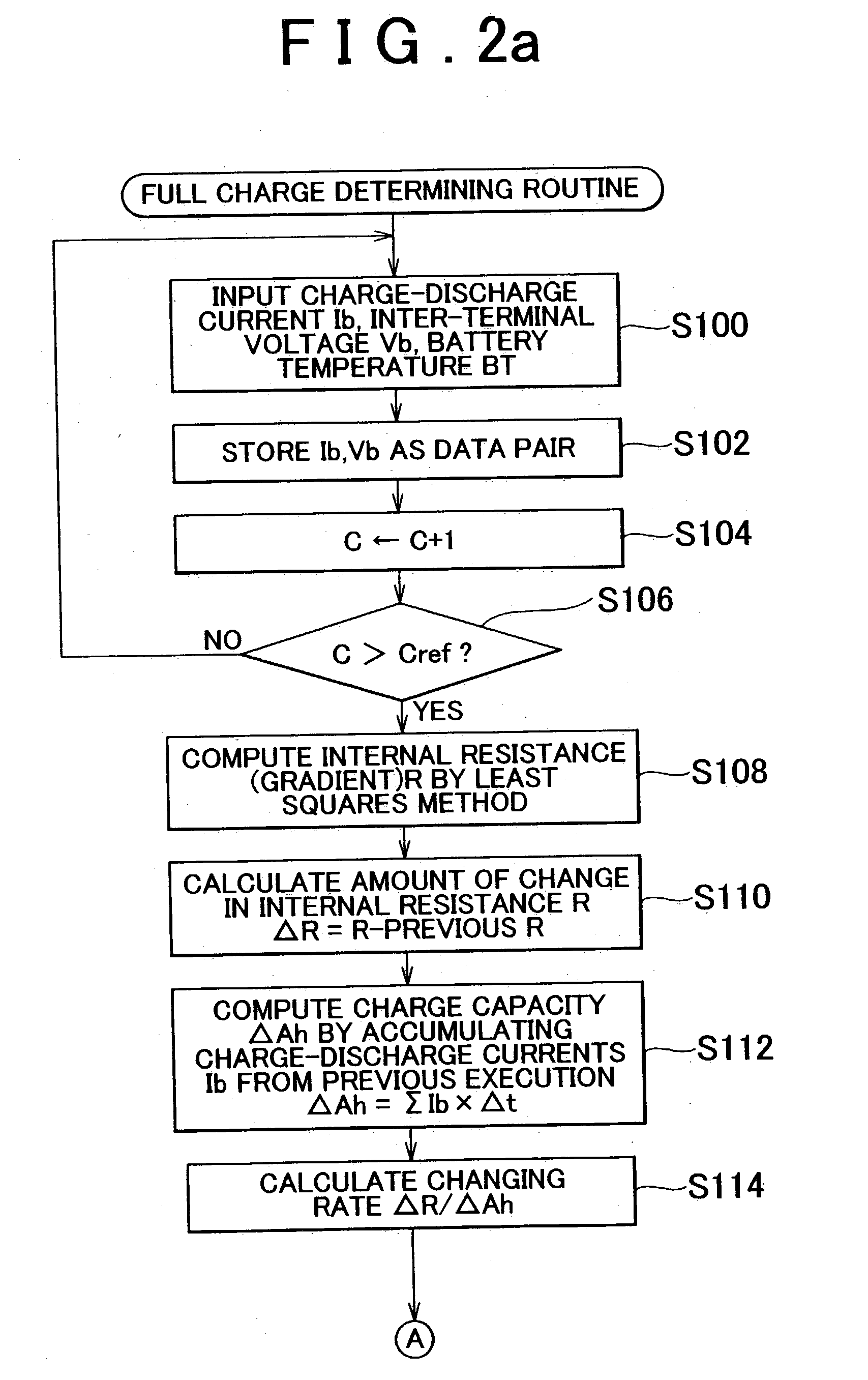State-of-charge detector device, program thereof, state-of-charge detecting method, and charge-discharge control device
a detector device and state-of-charge technology, applied in the direction of instruments, electrochemical generators, transportation and packaging, etc., can solve the problems of device difficulty in detecting device cannot precisely determine whether the battery has reached the fully charged state, and the temperature of a secondary battery is considerably affected
- Summary
- Abstract
- Description
- Claims
- Application Information
AI Technical Summary
Benefits of technology
Problems solved by technology
Method used
Image
Examples
Embodiment Construction
[0026] In the following description and the accompanying drawings, the present invention will be described in more detail with reference to exemplary embodiments.
[0027] An exemplary embodiment of the invention will be described below. FIG. 1 is a schematic diagram illustrating a construction of a charge-discharge control device 20 that also functions as a state-of-charge detector device. As shown in FIG. 1, the charge-discharge control device 20 is designed so as to control the charging and discharging of a secondary battery 22 (e.g., a nickel metal hydride battery) that is connected to a load 24. The control device 20 has a current sensor 32 for detecting the electric current through the secondary battery 22, a voltage sensor 34 for detecting the voltage between terminals of the secondary battery 22, a temperature sensor 34 for detecting the temperature of the secondary battery 22, and an electronic control unit 40 for controlling the entire device. For example, if the charge-disch...
PUM
| Property | Measurement | Unit |
|---|---|---|
| electric current | aaaaa | aaaaa |
| voltage | aaaaa | aaaaa |
| internal resistance | aaaaa | aaaaa |
Abstract
Description
Claims
Application Information
 Login to View More
Login to View More - R&D
- Intellectual Property
- Life Sciences
- Materials
- Tech Scout
- Unparalleled Data Quality
- Higher Quality Content
- 60% Fewer Hallucinations
Browse by: Latest US Patents, China's latest patents, Technical Efficacy Thesaurus, Application Domain, Technology Topic, Popular Technical Reports.
© 2025 PatSnap. All rights reserved.Legal|Privacy policy|Modern Slavery Act Transparency Statement|Sitemap|About US| Contact US: help@patsnap.com



